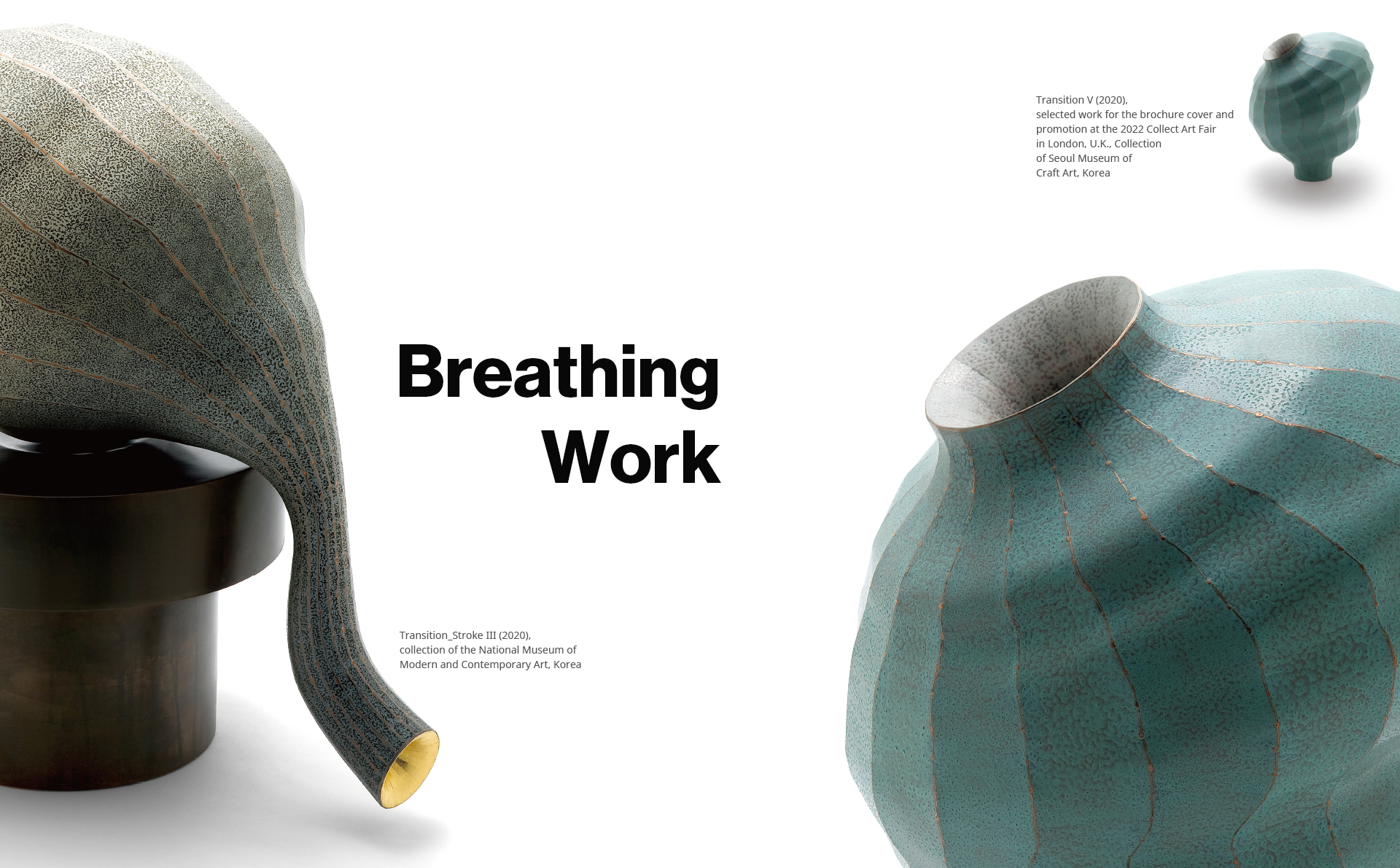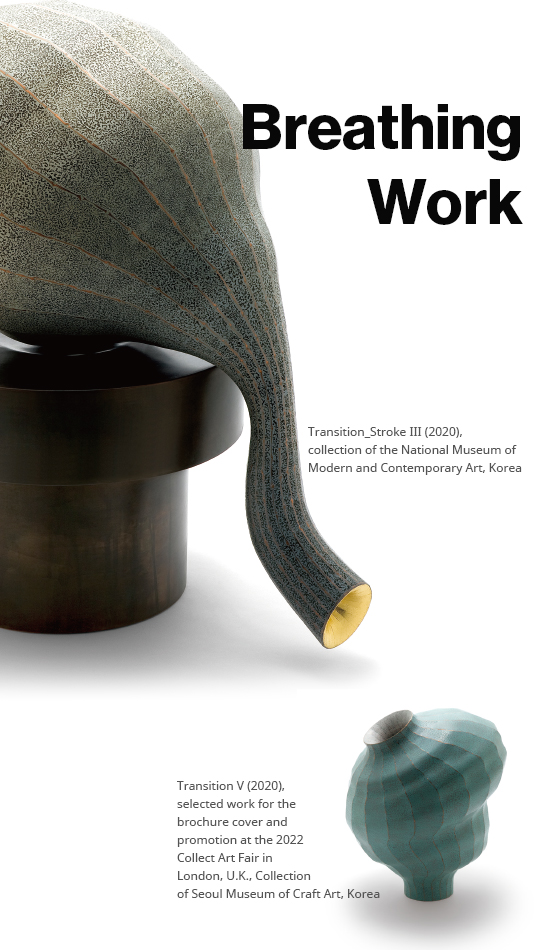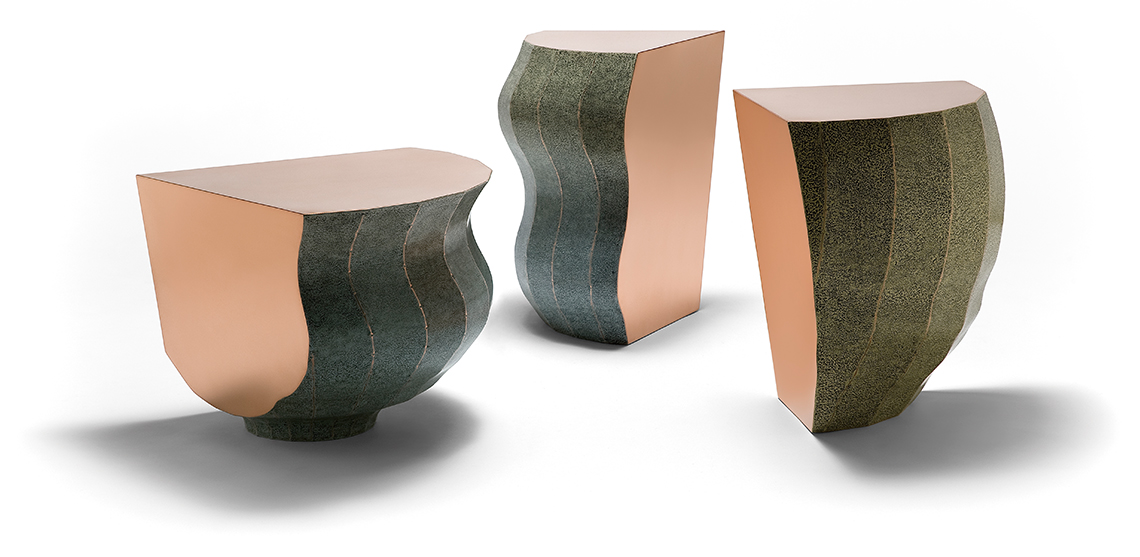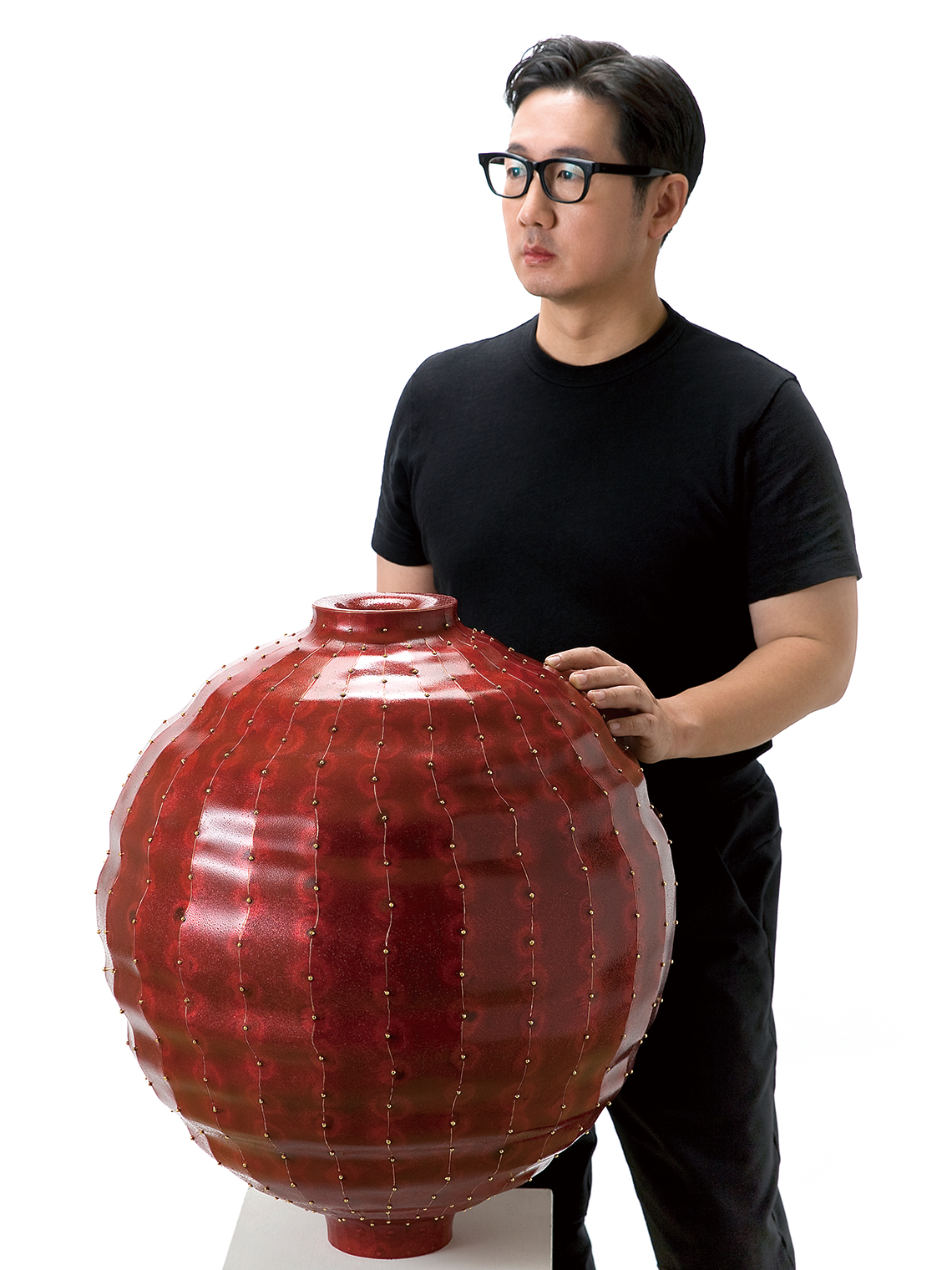Renowned artist Jaiik Lee―crafting objets d’art out of metal―infuses his creations with vitality. As one focuses on the irregularly drawn curves, the colorful hues that do not seem to be made of metal, and the seemingly soft texture, his works seem to undulate as if taking a deep breath. His decades of experience and intense contemplation have created such a mysterious sensibility. Today, he heads to his studio once again to breathe life into metal chunks to give birth to his works that are just like him.


Writer.
Sung Ji Yeon
Photos courtesy of.
Jaiik Lee
Jaiik Lee
Q. Please introduce your work.
Usually, crafts entail creating something with a function―but in my case, I don’t create functional crafts; instead, I create objets d’art that embody my desired expressions.
This is well exemplified in the Transition series, which began in 2019. Among them, I would like to highlight Transitions I, II and III as representative works. They were the first works in which I completely changed my style and publicly unveiled them. They are also special works that have shaped who I am today.
Transition V―introduced in 2020―is another notable piece. It was created when the techniques I had experimented with while making the Transition series were stabilizing.
Lastly, there is Transition VII―a work that made it to the finalists of the Loewe Craft Prize after five years of challenges. It maximizes the concept of “my own.” I meticulously examined the production process to ensure that my unique sense of sculpture and the inherent charm of the work itself could shine through strongly.
Q. The Transition series particularly stands out in terms of form.
In the past, I mainly created works with a minimalistic feel and geometric structures―with the overarching theme being “viewing the world from a third-party perspective.” However, when I went to study in the U.S., the theme of my work shifted to “myself in a new environment.” Concurrently, the visual language of my creations underwent a gradual transformation. Instead of projecting my situation onto human-shaped objects, I began to envision it as single-celled organisms.
The reason for this is that during my studies abroad, I realized I had always liked the forms of living organisms. My mother tells me that when I was very young, I loved fish when we lived in Pohang. The memory of experiencing something with the organic form of living creatures always stayed with me, and even when I doodled, I often drew such things. Reflecting on this realization while studying abroad, I started shaping my current artistic style by incorporating the things I used to like―whales or fish―into the forms of my works as an inspiration.
Q. It seems like you place special emphasis on form.
I aim to articulate my thoughts through form―simultaneously, I endeavor to seamlessly integrate themes and the process of shaping my worldview into my creations. I firmly believe that an artist should show their unique perspective on the world. Therefore, just because someone else’s work is aesthetically excellent doesn’t mean I should easily imitate it. Likewise, even if an artist’s style changes, their work should not appear as someone else’s.
In that sense, form is the most important means of communication between me and the audience. Therefore, I pay more attention to form than to the work’s texture or color. Similarly, I consider the formal coherence between works important. I hope people can recognize any of my works as belonging to Jaiik Lee―regardless of which one they see.
Q. The work doesn’t seem to be made of metal.
That’s because I spray ceramic pigment on the work. Another source of inspiration for my work is the moon jar. In my early 20s, I saw a somewhat distorted moon jar at the British Museum’s Korean Gallery. Initially, I found its shape unappealing, but over time, I grew to appreciate the irregularity of the moon jar and began exploring ways to recreate it. In the process, I learned that Korean clay is unsuitable for making large objects, leading to uneven surfaces in my attempts to create larger pieces. Given my Korean heritage, and recognizing similarities between the irregular shape of the moon jar and my own work, I embraced it as a significant source of inspiration.
 From left to right, CN 2, CN 3, CN 1 (2021), side table (art furniture)
From left to right, CN 2, CN 3, CN 1 (2021), side table (art furniture)Q. Are there any advantages to adding ceramic pigment?
It allows for a broader spectrum of expressions. The types of metals used in metalwork and the methods of coloring metals are also limited. While metal provides freedom in shaping forms, there are restrictions on the final texture and color. However, employing ceramic pigments widens the scope for color expression. Additionally, durability improves, and there is an effect of further elevating the sophistication of the work. During my studies abroad, my mentor’s use of acrylic paint on metalwork inspired me to experiment with ceramic pigments.
Q. What is your source of energy?
Primarily, I’d say it’s “interest.” There hasn’t been a single instance where the work process didn’t bring joy. If I didn’t like it, I couldn’t persist. Also, I find pleasure in planning. Whether the goal is big or small, I outline the process meticulously once it’s set. By methodically advancing through the stages of planning, I’ve never felt overwhelmed―even with lofty goals. I see planning itself as the fuel to get me going until now.
Q. Do you have a goal as an artist?
I am someone who creates art. Therefore, I don’t define which field my works belong to―whether it’s crafts, fine art or others. However, in Korea, there’s still a tendency to categorize and treat fields separately, determining what is considered craft and what is considered fine art. I hope to break away from such a trend and wish for moments where the work itself can be regarded as art. Therefore, I want to promote that there are various artists out there by engaging in consistent creative work.
Q. What are your future plans?
I am preparing for an exhibition with artists Bokyung Go, Joonyong Kim, Junsu Kim, Sung-youl Park, Jieun Park and Woosun Cheon. We all aim to present high-quality works. We are scheduled to hold our third exhibition at Gallery Royal in May.
 Transition VII (2022), Finalist for the Loewe Foundation Craft Prize 2023
Transition VII (2022), Finalist for the Loewe Foundation Craft Prize 2023